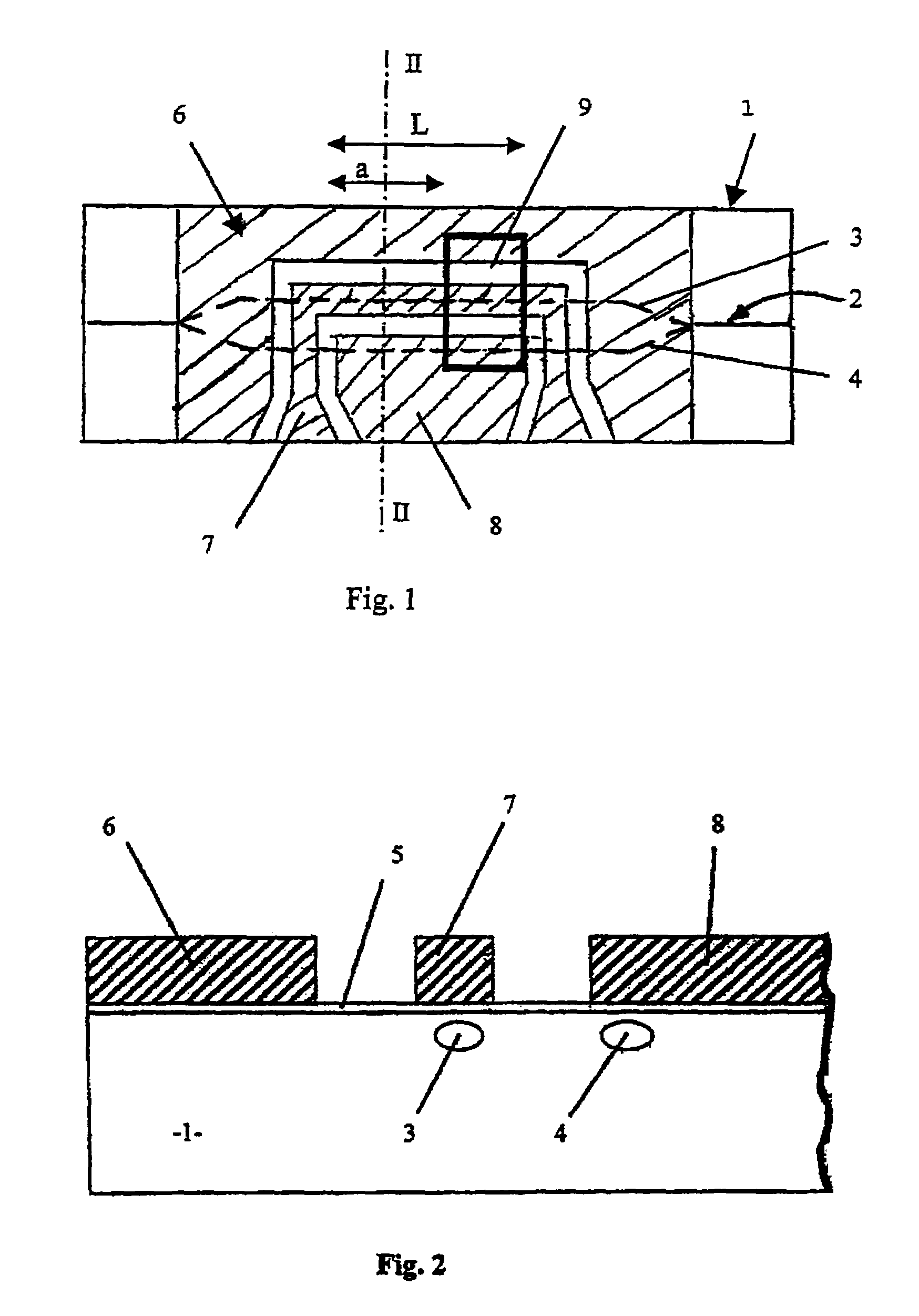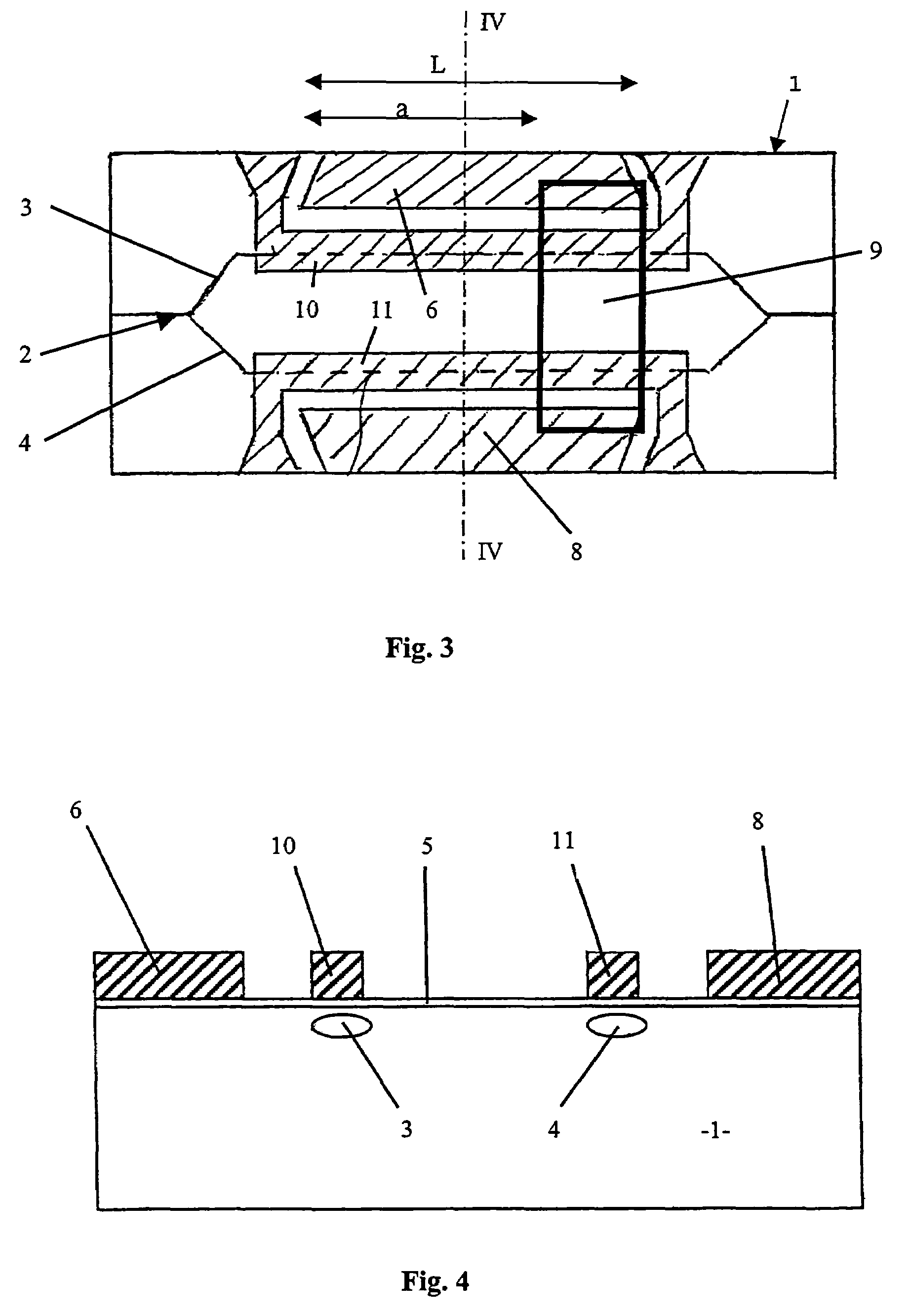Electro-optic devices, including modulators and switches
a technology of optical devices and modulators, applied in the field of optical devices, can solve the problems of severe bandwidth limitations, insufficient or even no resultant modulation, and significant reduction of modulation efficiency, and achieve the effect of reducing the cost of modulation efficiency, reducing the cost of modulation, and reducing the bandwidth
- Summary
- Abstract
- Description
- Claims
- Application Information
AI Technical Summary
Benefits of technology
Problems solved by technology
Method used
Image
Examples
Embodiment Construction
[0030]In the structure of FIGS. 1 and 2, a lithium niobate chip 1 is formed in the usual way with a Mach Zehnder interferometer 2 having two branches 3 and 4. A buffer layer 5 (e.g. of silica) is used to achieve phase-velocity matching and to reduce the optical loss due to metal electrodes 6, 7, 8. The thickness of the silica layer is in the range of 0.5–1.5 μm, the thickness of the metal (preferably gold) electrodes is in the range 15–25 μm. Electrode 7 is a ‘hot’ electrode with a width in the range 5–15 μm; 6 and 8 are ‘ground’ electrodes with widths in the range 10–1000 μm and each of the gaps between ‘hot’ and ‘ground’ electrodes is in the range 10–20 μm.
[0031]The active modulating zone of the device is the length L, and at a distance a from its upstream end, calculated by solving the equation above, domain inversion is realized. In this way the modulator is made up of two regions, the domain orientation of zone 9 being opposite that of the remainder.
[0032]A number of procedures...
PUM
 Login to View More
Login to View More Abstract
Description
Claims
Application Information
 Login to View More
Login to View More - R&D
- Intellectual Property
- Life Sciences
- Materials
- Tech Scout
- Unparalleled Data Quality
- Higher Quality Content
- 60% Fewer Hallucinations
Browse by: Latest US Patents, China's latest patents, Technical Efficacy Thesaurus, Application Domain, Technology Topic, Popular Technical Reports.
© 2025 PatSnap. All rights reserved.Legal|Privacy policy|Modern Slavery Act Transparency Statement|Sitemap|About US| Contact US: help@patsnap.com



